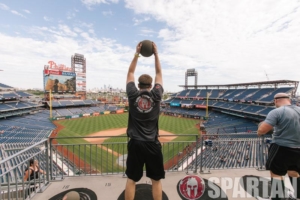
Spartan Race has many different styles and lengths of races. At first glance, many people see that Spartan Race offers two different style sprint races. First, there is the traditional sprint. Some are run on relatively flat courses and others are on mountains. In 2018 Spartan started a race series that they've specifically called the Mountain Series. These events were in Montana, Minneapolis, Palmerton, Pennsylvania, Colorado Rockies, Killington, Vermont, and New Jersey, Tri-State Sprint. The other type of sprint is the Spartan Stadium Sprint, which in 2019 was renamed Stadion.
Stadion Races:
Stadion Differences:
A Spartan Stadion Race typically takes around 60-90 minutes for the average runner. At the 2018 Philadelphia race, Elite Isaiah Vidal finished in just 28:22. The longest time was just over 2 hours 45 minutes. At these events, you're on cement the whole time and you spend the majority of your time running stairs. Due to the use of the stadium venues, they are not allowed to have fire nor is there any mud at these events. For some, this is a plus, others a bit of a letdown. They also utilize different obstacles.
My closest Stadion race is in Philadelphia, Pennsylvania. Some of the unique obstacles at a Stadion race are heavy jump ropes, slam balls, push-ups, box jumps, and assault bikes. They use water jugs instead of the bucket carry. Atlas stones are replaced by medicine balls which is not much of a noticeable difference but can be a bit harder to grip when wet.
Stadion Training:
Training for a Stadion race is a little bit different than a mountain race. One of the biggest things to train for is the stairs. Lots of stairs. It is also a quick sprint type race compared to a mountain race. The stair stepper will become your training friend, just don't forget to not hold onto the handles. These races tend to be fewer miles then the mountain courses.
As someone who has never done CrossFit, I was a bit out of my element my first lap at a Stadion. I had never ridden an assault bike, I also had never touched a heavy rope. If you work out at a traditional gym, these are a little bit harder to train for. The closest I have to a battle rope is the heavy jump rope. An assault bike is a hard cardio, quick paced bike. You will have a set number of calories you need to burn before you get off the bike so the faster you go the quicker you are done. A 500m row or even just hop on a stationary bike and peddle your heart out on a higher resistance would be a good option for this. Slam balls are now starting to pop up at most gyms so just adding these into your cardio is easier.
Mountain Races:
Mountain Differences:
A Spartan Mountain Series Race typically takes around 90-120 minutes for the average runner. I will say these races have much bigger time gaps between elite, age group, and open racers for time on the mountain. A quick comparison shows fastest times at around 55 minutes for the Killington Sprint in 2018 for the 1st place finishers in each wave. However a few open wave Sprint finishers had times over 8 hours. The 2017 Palmerton Sprint had similar Elite times with around 55 minutes but Age Group and Open first place finishers were at 1 hour 20 minutes. The longest time for a Mountain Series Race in 2017 was just under 8 hours. These courses are known to be two of the hardest courses in the East. I have not personally run Killington yet; 2019 will be my 1st time on that mountain.
Mountain courses have more flexibility on obstacles due to being outdoors. Unlike Stadions, you spend your time at these races running on dirt, rock, and in water. You also will have the Spartan Fire jump at the end of the race. Mountain Series Races, like most spartan events, traditionally have all the mud obstacles like Rolling Mud and Dunk Walls. Palmerton has one unique obstacle: Ape Hanger, which can also be seen at Tahoe. Killington has the Tarzan Swing and Swim on the bridge.
Mountain Training:
My first introduction to Spartan was through mountain courses. I am in the northeast and have Palmerton and New Jersey both local to me. Tuxedo and Killington are also within a days trip for a race. The best training for these events really is just to get outside and run trails. Run on dirt and uneven ground. Your body needs to learn how to land on branches and rocks. While nothing can replace real hill sprints, 15+ incline on the treadmill can help.
They also always put the sandbag and bucket carry on long steep hills so while being able to hold either of those for a while is helpful again you will want to practice this on an incline. Running downhill can also take time to get used to. This can also be tricky because the ground is not solid in all areas. Sometimes you will have loose rock and sticks under your feet which can make footing challenging. This is something that can't be learned at the gym.
Palmerton is my local course. It also has very unpredictable weather. Pennsylvania in July can be between 70-110 degrees with atrocious humidity. This is something you need to train for a bit more with Mountains vs Stadions. A Stadion is quick, but you can spend hours on the mountains during which you need to think about hydration and nutrition even with the sprint lengths in order to avoid dehydration. Pre-race prep should always include plenty of water and a good diet, no matter the type of race you plan to do, but summer in the mountains it is even more important.
What to Wear:
There are so many articles about what to wear out there OCR so I am not going to go into any crazy details besides the basics. The most noticeable thing for me is the water obstacles. Unlike dry Stadion races, your clothes matter more on mountain courses with water crossings and obstacles. While at a stadium you can wear cotton and it will not ruin your day, a cotton shirt once soaked on a Mountain will make you miserable. I know this from experience. Carrying an extra few pounds of water on top of a sandbag or bucket while hiking up the side of a mountain is not enjoyable at all.
Shoes also are one other big difference. I personally do not do any road running. So I chose to run the Stadion races in chuck tailors. Not ideal, but it worked for 3 miles. Most people chose to run in normal gym shoes. On the mountain, you are going to want proper trail or OCR specific shoes. They will help you grip in the mud and are made to drain better when wet. Both very important.
Wrap Up:
Everyone I have spoken to has a preference in which style Spartan Sprint is their favorite to race and why. Each style event plays to different racers for things they love and things they loathe. What might make one style better for some makes others cringe. It, however, is always worth it no matter what to try them out and see what you think. Have fun this race season!
Disclaimer: The viewpoints expressed by the authors do not necessarily reflect the opinions, viewpoints and official policies of Mud Run Guide LLC, or their staff. The comments posted on this Website are solely the opinions of the posters.
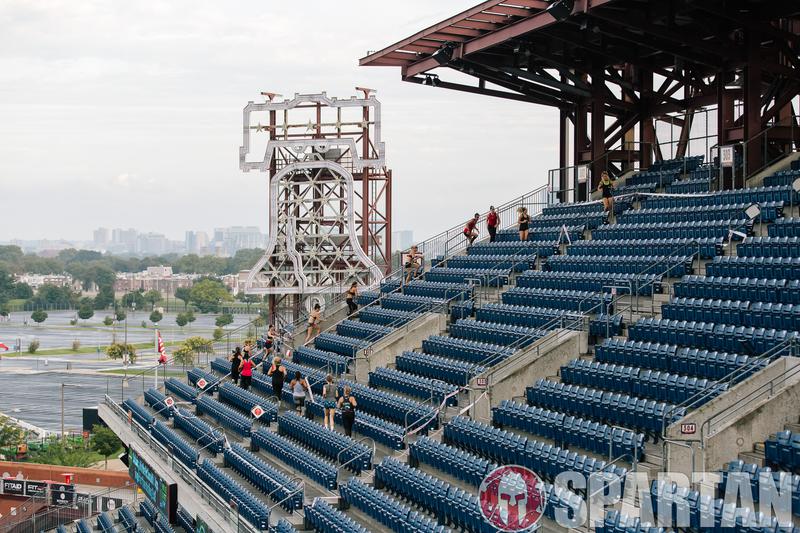
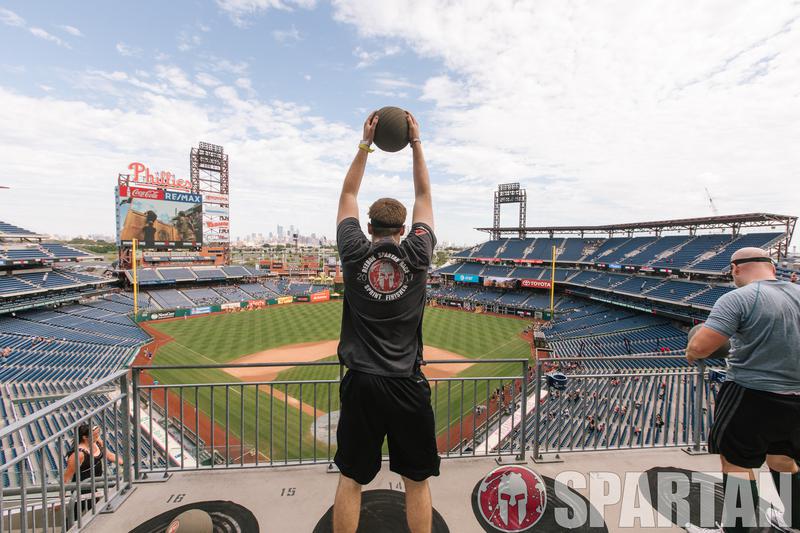
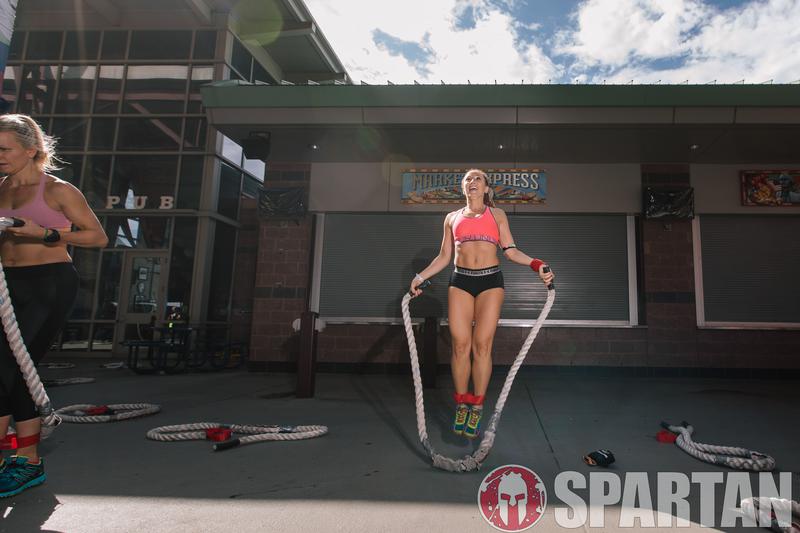
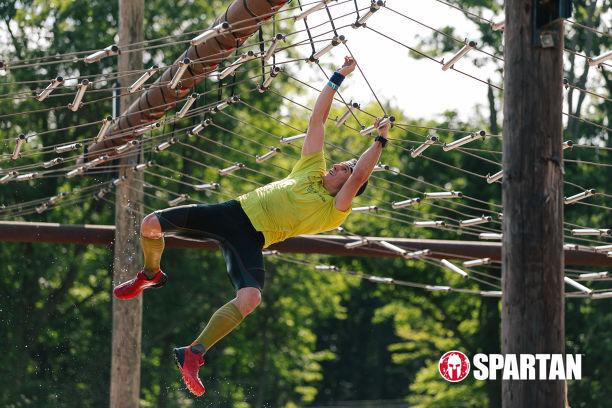
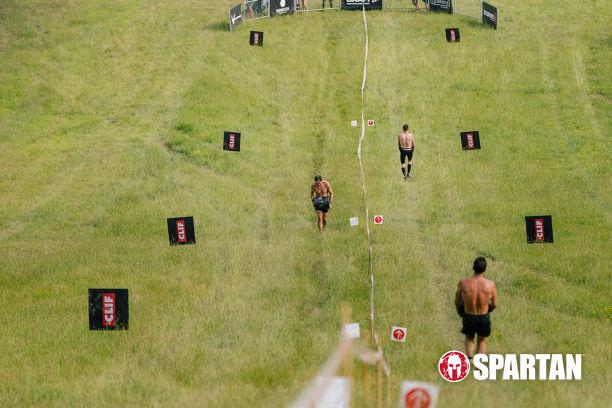


Helpful information. Fortunate me I found your site accidentally, and I am stunned why
this accident didn’t happened earlier! I bookmarked it.